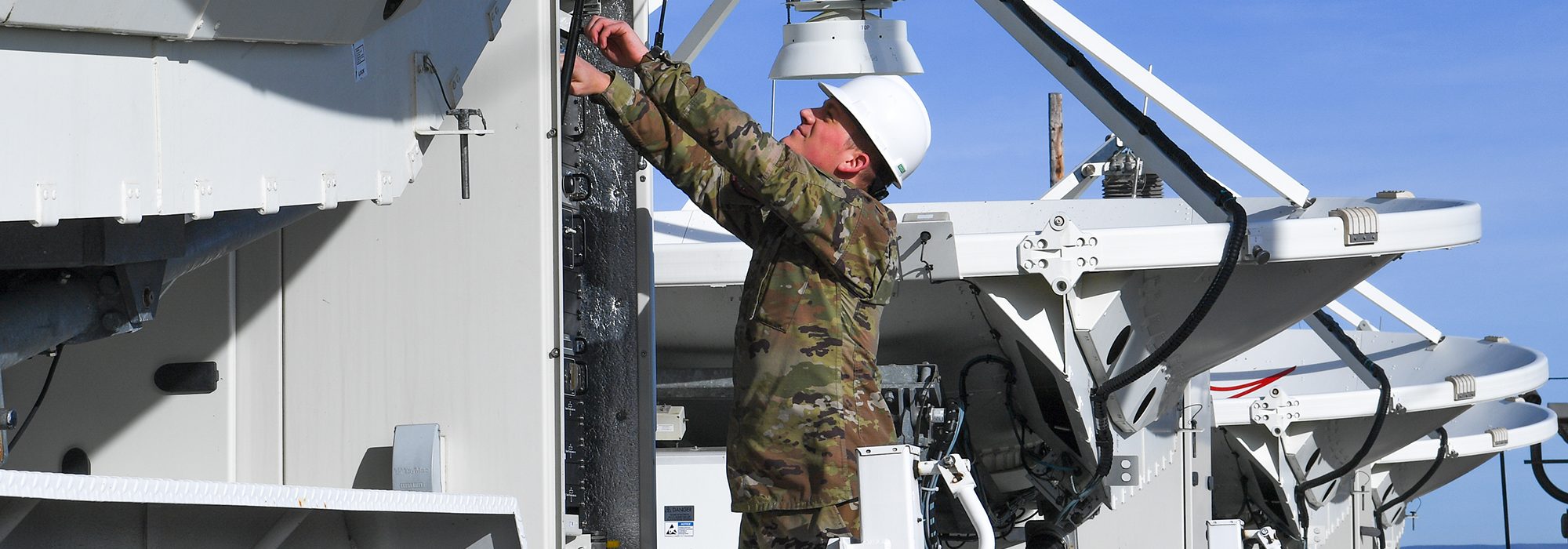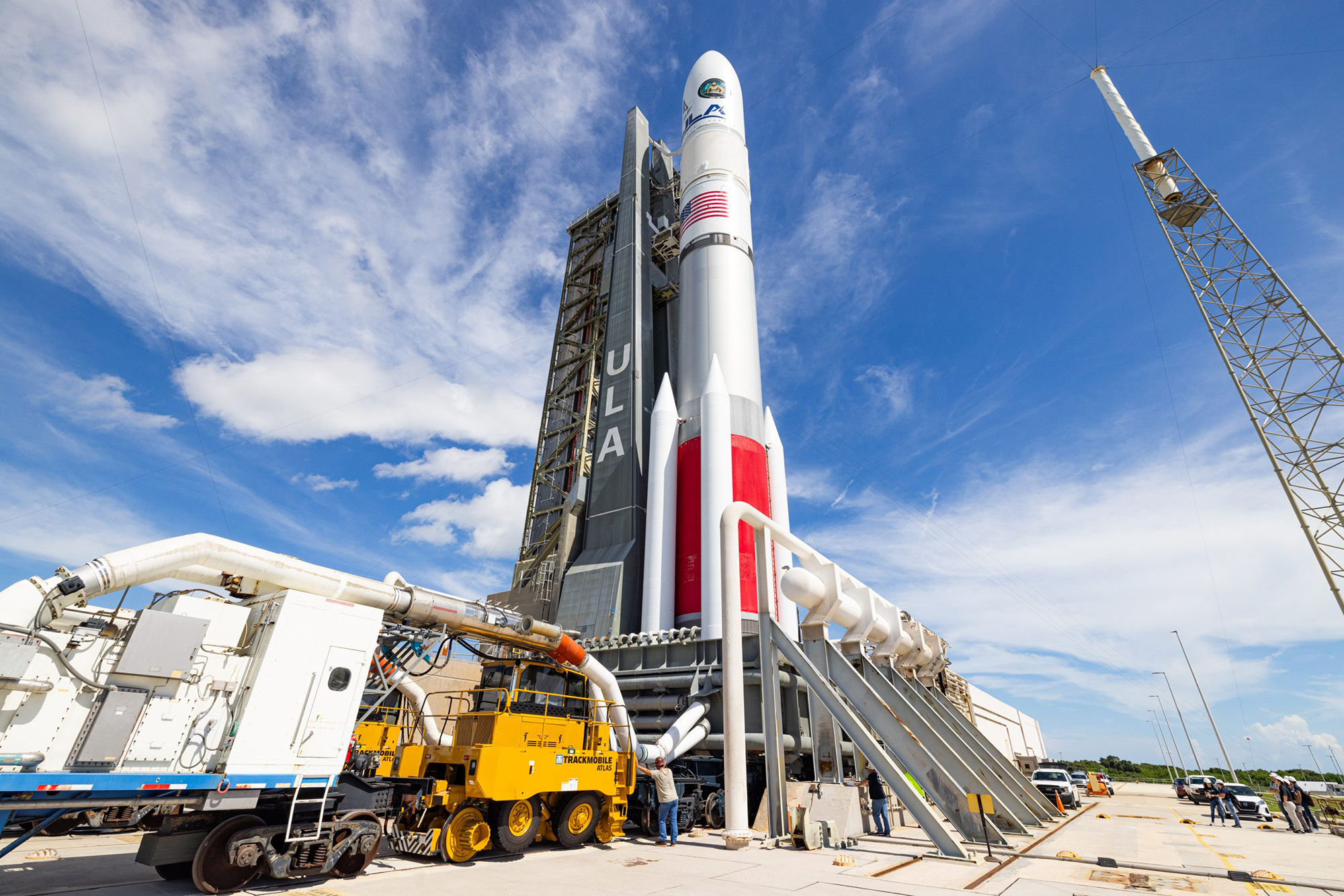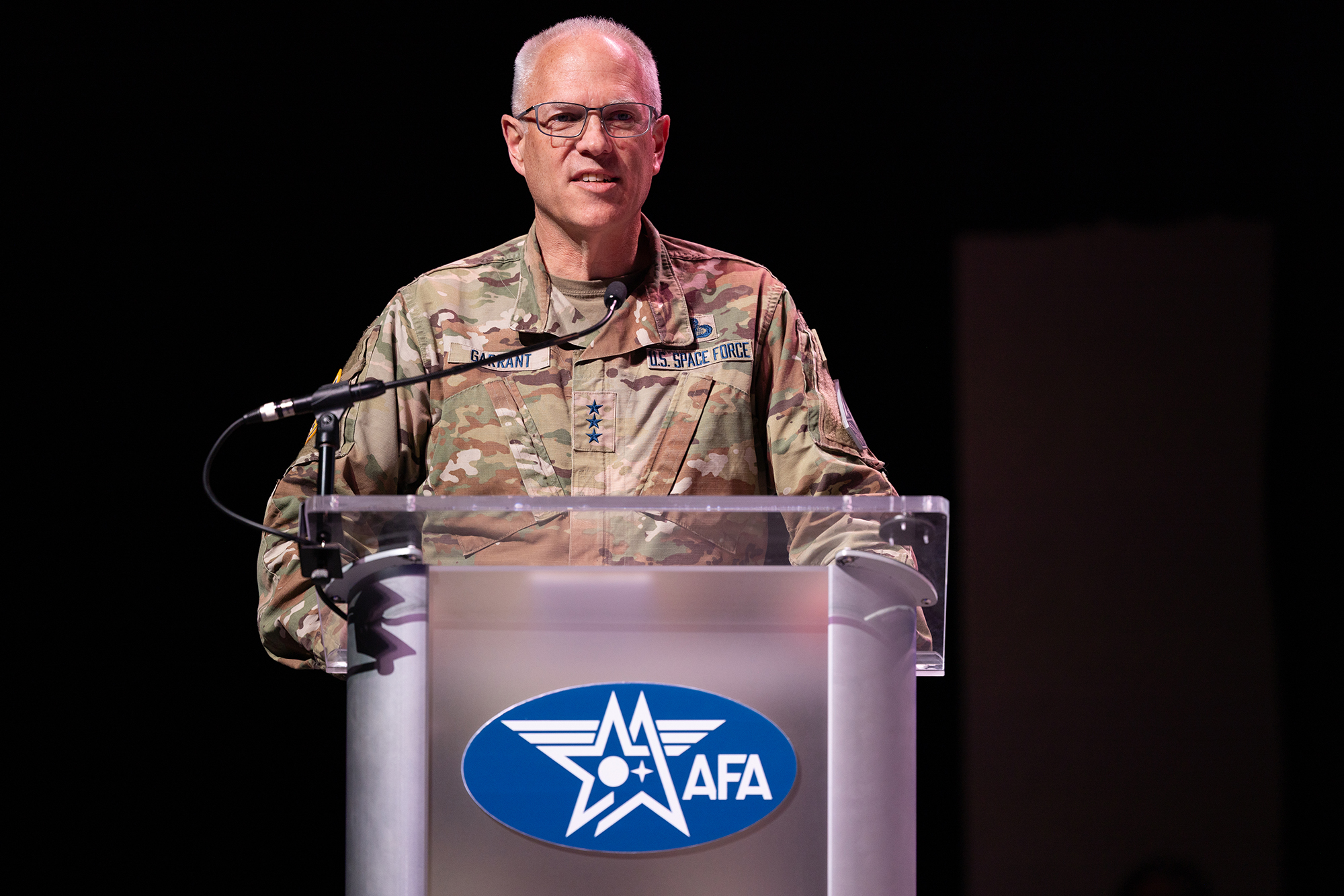Space Force Reinvents Part Time: Not Your Dad’s Guard & Reserve
By Greg Hadley
The Space Force revealed new details about its plan for part-time Guardians—and they aren’t like anything the military has seen before.
Part-time service will be episodic, lasting for a tour or two, Space Force officials say, a complete shift from the classic one-weekend-a-month, two-weeks-a-year Guard and Reserve model that’s existed for decades.
“Our long-term vision is not necessarily this career-long part-time work role,” said Col. Matthew E. Holston. The Space Force anticipates having about 800 part-time positions.
The Space Force will begin taking over missions long performed by the Air Force Reserve and Air National Guard in October, and as part of that transition, it is accepting transfers from those components. To start, those transfers focused on Airmen willing to come into the Space Force in full-time roles—in late 2024, the service selected more than 250 members of the Air Force Reserve for full-time transfers, and on Aug. 18, officials began reviewing applications from Air National Guard members to become full-time Guardians.
Yet interest in the part-time roles remains high, and the transition is coming. On Sept. 3, the Space Force opened its application window for Air Force Reservists to apply for part-time USSF positions. The window is open until Oct. 10.
Those selected will incur a minimum three-year service commitment, which will also be the tour length for most part-time assignments “At the conclusion of the part-time assignment, members can compete for the same part-time assignment or another role, move to an inactive status, separate, or retire,” a spokesperson told Air & Space Forces Magazine.
Commanders will regularly review part-time jobs to determine if mission requirements require a part- or full-time solution.
Part-time service is a way to retain Guardians whose family or other life circumstances might not enable them to continue on full-time Active duty. Then the member can return after a few years when circumstances change again.
“We are designing it to try to incentivize you to come back to full-time,” said USSF Chief Human Capital Officer Katharine Kelley on a DefenseScoop podcast. “But what it does is allow people who might have a point in their life where say, you want to start a family or you’ve got an aging parent, and you need some flex, we can build that and have that.”
Still, it does not appear that members will be barred from continuously reapplying for the same or similar part-time jobs. “Requests for a follow-on part-time assignment will be reviewed and matched based on current needs of the Space Force, informed by Guardian preferences,” the spokesperson said. “For the vast majority of Guardians, assignments—whether full- or part-time—will be managed through the annual Guardian Assignment Timeline process, providing both the service and Guardian stability through the assignment process.” Leaders have previously said they anticipate part-time Guardians will focus on test, evaluation, training, or planning jobs, while operational assignments will be reserved for full-timers.
Holston said part-time jobs will be demanding. “Your minimum participation can be 36 days, but the expected work schedule will be set by the hiring authority, and it may be Monday- through-Friday work,” Holston said. “You may find opportunity for weekend work, but the hiring authority will define what the schedule looks like.” The window for Air Guard members to apply to become full-time Guardians opened Aug. 18 and ran through Sept. 19. Transfers are expected to take place in spring 2026, and those selected must commit to at least two years of service. It’s not yet clear when the window will open for Guardsmen looking for part-time jobs.
Only Guardsmen in space-focused ANG units identified by the 2025 National Defense Authorization Act are eligible for transfer to the Space Force:
- 213th Space Warning Squadron, Alaska Air National Guard
- 148th Space Operations Squadron, California Air National Guard
- 216th Electromagnetic Warfare Squadron, California Air National Guard
- 137th Space Warning Squadron, Colorado Air National Guard
- 138th Electromagnetic Warfare Squadron, Colorado Air National Guard
- 114th Electromagnetic Warfare Squadron, Florida Air National Guard
- 150th Electromagnetic Warfare Squadron, Hawaii Air National Guard
- 109th Electromagnetic Warfare Squadron, Hawaii Air National Guard
- 126th Intelligence Squadron, Ohio Air National Guard
On the Air Force Reserve side, those eligible include:
- Officers with: 13S, 14N, or 17D career fields.
- Enlisted with: 1C6, 1D7, 1N0, 1N, 1N2, 1N3, 1N4; or 1N8 career fields.
- Candidates outside of space operations career fields who have space experience and are fully trained in the career field they are applying for.
ULA’s Vulcan Centaur Makes Historic Launch
By Greg Hadley
The Space Force celebrated two major milestones with a single mission in August: its first launch using the new Vulcan Centaur rocket and the first launch of an experimental navigation satellite in nearly 50 years.
USSF-106 launched Aug. 12 from Cape Canaveral Space Force Station, Fla. “Pretty historic point in our program history,” said mission director Col. Jim Horne III in a briefing ahead of the launch. “We officially end our reliance on Russian-made main assured access to space with at least two independent rocket service companies that we can leverage to get our capabilities on orbit.”
Among the payloads: Navigation Technology Satellite 3, or NTS-3, which had been on hold as Vulcan awaited certification to carry National Security Space Launch missions. (Other payloads were not disclosed).
“I can’t tell you how excited I am to see it finally launched and finally start the on-orbit experimental mission,” said Joanna Hicks, a senior research aerospace engineer at the Air Force Research Laboratory.
Vulcan Centaur
After years of development, delays and certification processes, the Space Force and contractor United Launch Alliance are finally ready to send the new Vulcan Centaur rocket to orbit with government payloads onboard. The launch vehicle has flown twice before as part of the certification process, overcoming an anomaly with one of its solid rocket boosters on the second launch.
ULA officials are projecting confidence that they have resolved the second launch’s issues and that the Aug. 12 flight was set up for success. For this mission, the rocket will have four boosters attached to help it reach geosynchronous orbit some 22,000 miles up, compared to two boosters on each of its previous two flights.
“The team over the last few months has been going through in excruciating detail, validating our analyses and predictions to support this flight, leveraging the data from the previous two missions to ensure mission success,” said Gary Wentz, vice president for government and commercial missions at ULA.
The stakes are high for ULA because USSF-106 is the first of 25 ordered launches on Vulcan Centaur, and a backlog built up during the development and certification process.
“We’re ready and postured to launch as quickly as we can as we work through that backlog,” Wentz said.
NTS-3
The NTS-3 spacecraft is “DOD’s first experimental navigation satellite in 48 years,” Hicks said. “The last one was NTS-2, launched in 1977, so at the lab, we think that we are overdue for an experiment in this area.”
It’s an expensive experiment—the Air Force Research Lab and the Pentagon have spent roughly $250 million developing and building the spacecraft and its associated ground systems, said Hicks, who has spent the better part of 10 years on the program.
From geosynchronous orbit, NTS-3 will conduct more than 100 position, navigation, and timing (PNT) experiments, including:
- A new electronically steerable phased array antenna, to beam high-powered PNT signals to specific areas of the globe where electronic warfare and jamming are particularly fierce;
- New advanced signals to guard against PNT spoofing, when adversaries try to imitate the signal;
- Reprogrammable equipment that can be updated on orbit to respond to new threats; and
- Receivers that can help navigate the satellite with less contact from ground operators.
NTS-3 is the first in a coming wave of experiments and prototypes meant to bolster the Space Force’s Global Positioning System constellation and ensure capability persists when contested by adversaries. “PNT supports our nation’s warfighters in every single domain and has become more critical to their success,” said Andrew Builta, an executive at L3Harris, which built NTS-3. “That makes it a prime target for evermore audacious, frequent, and sophisticated jamming and spoofing attacks. We need technology as a nation to be responsive and flexible enough to ensure available, stable, and accurate PNT in GPS-disrupted, -denied or -degraded environments.”
NTS-3 technologies and objectives dovetail with what the Space Force says it needs for future operations: agile software that can be reprogrammed on the fly, anti-jamming signals, more autonomous operations, and resiliency across orbits.
“One of the things that NTS-3 is testing is the multi-orbit constellation concept,” Hicks said. “So can we receive signals from NTS-3 at GEO as well as GPS at [medium-Earth orbit], and take advantage of all of them? Maybe in the future, we’ll be able to put some of these technologies in [low-Earth orbit], for example. We don’t currently have that as a planned mission, but that’s something that could conceivably happen in the future.”
Space Systems Command, the Space Force’s acquisition branch, is working on a Resilient GPS program of smaller, cheaper satellites to complement GPS. The Space Development Agency wants to embed PNT signals in its array of commercial satellites in low-Earth orbit.
AFRL is discussing the future of PNT with Space Force organizations like the Space Development Agency and the Space Warfighting Analysis Center, Hicks said.
USSF Wants to Share Intel with Industry
By Shaun Waterman
The Space Force’s neighborhood watch-style initiative to share information with the private sector about threats to space assets will eventually grow to include classified intelligence, said Lt. Gen. Philip A. Garrant, who runs Space Systems Command (SSC), the Space Force’s main acquisition organization.
“Ultimately, the idea is, let’s do it at the classified level,” Garrant said of SSC’s Front Door, the Space Force’s single point of contact for the space industry. Front Door’s Orbital Watch program, launched in April, shares threat intelligence with space asset owners and operators.
Orbital Watch briefings so far are declassified threat intelligence products, offered on a quarterly basis. But at ASCEND, a space industry event, Garrant said companies with cleared executives or offices will eventually be able to receive classified briefings on specific threats they might face.
“If we have a relationship with a company that enables classified information sharing, we can do very specific threat sharing with a specific company about a risk that we’re aware of for that company,” Garrant told reporters at a media roundtable. That’s the vision,” he added. “It’s going to take a little bit to get there.”
In its current Phase One state, Garrant explained, Orbital Watch is disseminating unclassified threat information derived from U.S. intelligence agencies. That adds to private sector efforts like the Space Information Sharing and Analysis Center (ISAC).
After a Russian cyberattack against the Viasat network at the launch of the Russia-Ukraine war in 2022, the Space ISAC facilitated a classified briefing organized by then-Principal Deputy Director of National Intelligence Dr. Stacey Dixon. The agencies’ briefing included the FBI and the National Air and Space Intelligence Center. A “significant number” of temporary clearances, known as “one-time read-ons,” were issued to space company senior executives normally not cleared to receive classified intelligence, Space-ISAC said later that year.
Garrant said that in Phase Two, Orbital Watch will include a portal where vetted companies can share their own threat information to the U.S. government for anonymous dissemination across the sector—a model borrowed from the cybersecurity industry.




